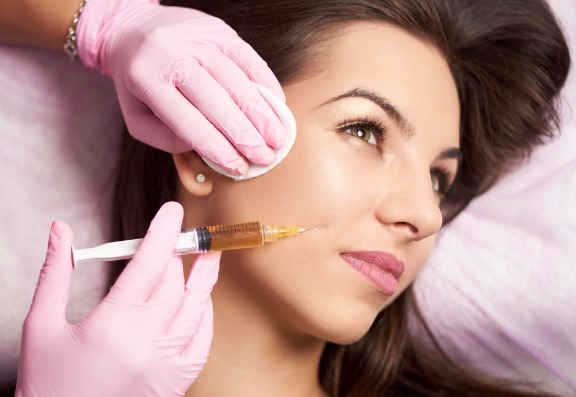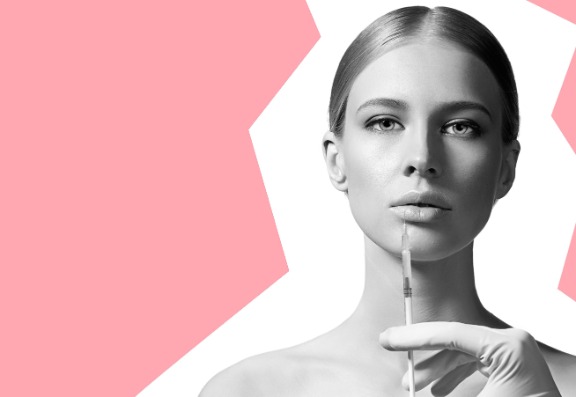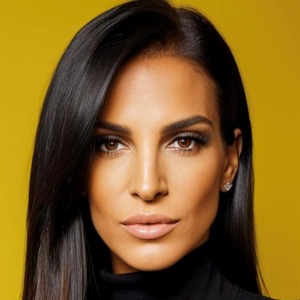In the world of cosmetic enhancements, Dermal Fillers and Botox have become household names, promising youthful skin and enhanced beauty. These non-surgical treatments are popular choices for reducing the signs of ageing, but they work in different ways and target distinct concerns. In this article, we'll delve into the differences between Dermal Fillers and Botox, helping you make an informed decision on which option suits your needs best.
Introduction
As the years go by, our skin inevitably shows signs of ageing – wrinkles, fine lines, and loss of volume. Dermal Fillers and Botox offer modern solutions to address these concerns without the need for invasive surgeries. However, understanding the distinctions between the two is crucial for making an educated choice.
Understanding Dermal Fillers
What Are Dermal Fillers?
Dermal fillers are injectable substances designed to add volume, smooth out wrinkles, and enhance facial contours. They are typically made from hyaluronic acid, a naturally occurring substance in the body, or other biocompatible materials.
How Do Dermal Fillers Work?
Dermal fillers work by replenishing lost volume and stimulating collagen production. When injected beneath the skin, they fill in creases and plump up areas like cheeks and lips, restoring a more youthful appearance.

Common Uses of Dermal Fillers
Dermal fillers are commonly used to treat nasolabial folds, marionette lines, and under-eye hollows. They can also be applied to enhance features like lips and cheeks.
Popular Types of Dermal Fillers
There are various types of dermal fillers, each with its unique properties and purposes. Hyaluronic acid fillers, such as Juvéderm and Restylane, are widely used due to their natural-looking results and reversible effects.
Exploring Botox
What Is Botox?
Botox, short for Botulinum Toxin, is a neurotoxin derived from bacteria. It temporarily paralyzes the muscles into which it's injected, smoothing out wrinkles and preventing new ones from forming.
Mechanism of Botox
Botox blocks signals from nerves to muscles, reducing muscle contractions. This is particularly effective for dynamic wrinkles caused by repetitive facial expressions, like crow's feet and forehead lines.
Applications of Botox Treatment
Botox is primarily used to treat forehead lines, glabellar lines (between eyebrows), and crow's feet. It can also provide relief from migraines, reduce excessive sweating, and alleviate muscle spasms.

The Core Differences with Dermal Fillers and Botox?
Dermal Fillers vs. Botox
The Core Differences
While both Dermal Fillers and Botox address ageing concerns, they have distinct mechanisms. Dermal fillers restore lost volume, while Botox inhibits muscle movement. The choice depends on the specific problem you're trying to tackle.
Ideal Candidates
Dermal fillers are suitable for those with volume loss and static wrinkles. Botox is ideal for dynamic wrinkles caused by muscle contractions. Your practitioner will guide you in selecting the right option.
Treatment Areas
Dermal fillers are commonly used in areas like cheeks and lips. Botox is often applied to the forehead, around the eyes, and between the eyebrows.
Duration of Results
Dermal filler results can last from 6 months to 2 years, depending on the type used. Botox results typically last around 3 to 4 months. Maintenance sessions are necessary for both treatments.
Side Effects and Risks
Common side effects of dermal fillers include temporary swelling and bruising. Botox may lead to headaches or a drooping eyelid. Serious complications are rare but possible with both treatments.
Choosing the Right Option
Consultation and Assessment
Consulting a qualified practitioner is crucial to determine which treatment suits your needs. They will assess your skin, discuss your goals, and recommend the most suitable approach.
Desired Results
Consider your desired outcomes. If you want to restore volume and plumpness, dermal fillers may be the choice. Botox might be the answer for a smooth forehead and reduced crow's feet.
Combining Treatments
In some cases, a combination of both treatments may yield the best results. Dermal fillers can address volume loss, while Botox targets dynamic wrinkles.
The Safety Aspect
Approved Usage
Both dermal fillers and Botox are approved by regulatory agencies for cosmetic use. Ensure your practitioner uses authorized products for your safety.
Licensed Practitioners
Seek treatments from licensed and experienced practitioners to minimize risks. Their expertise ensures proper injection techniques and safe practices.
Potential Complications
Minor complications like swelling and bruising are common and usually subside quickly. Severe complications like infections or allergic reactions are rare but emphasize the importance of professional administration.
Conclusion
In the realm of aesthetic enhancements, Dermal Fillers and Botox offer unique solutions for achieving a more youthful appearance. Understanding their differences and consulting with a qualified practitioner will help you make an informed decision tailored to your needs. Whether you choose dermal fillers to restore volume or Botox to smooth out wrinkles, the path to youthful radiance is within reach.

Author: Mrs Nas Brown
To view more blogs by Mrs Nas Brown please click here.
